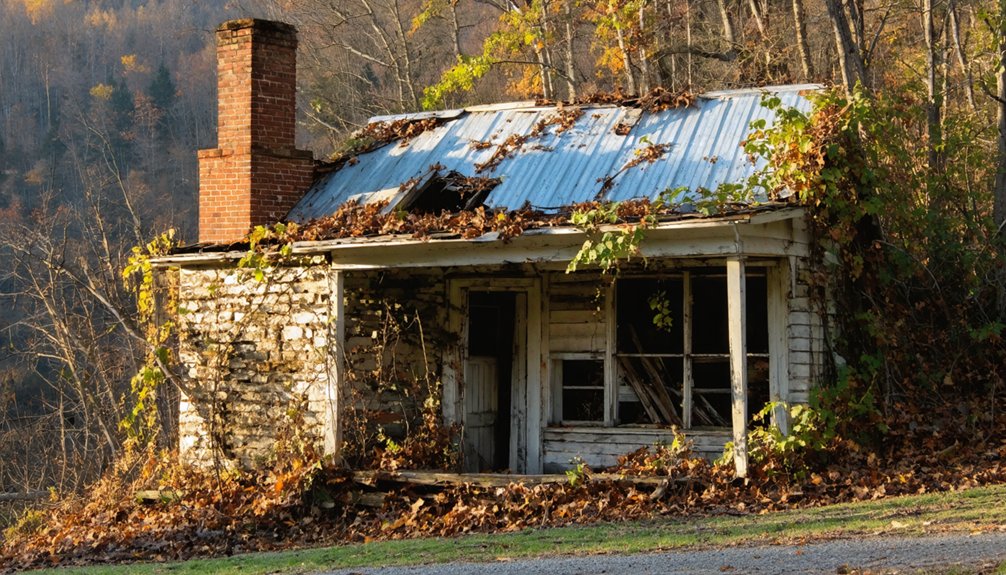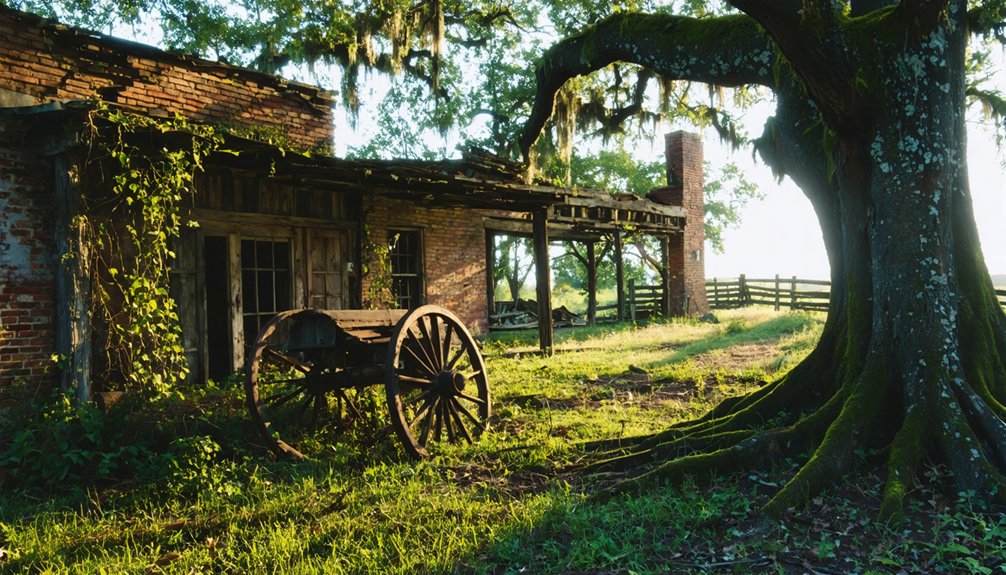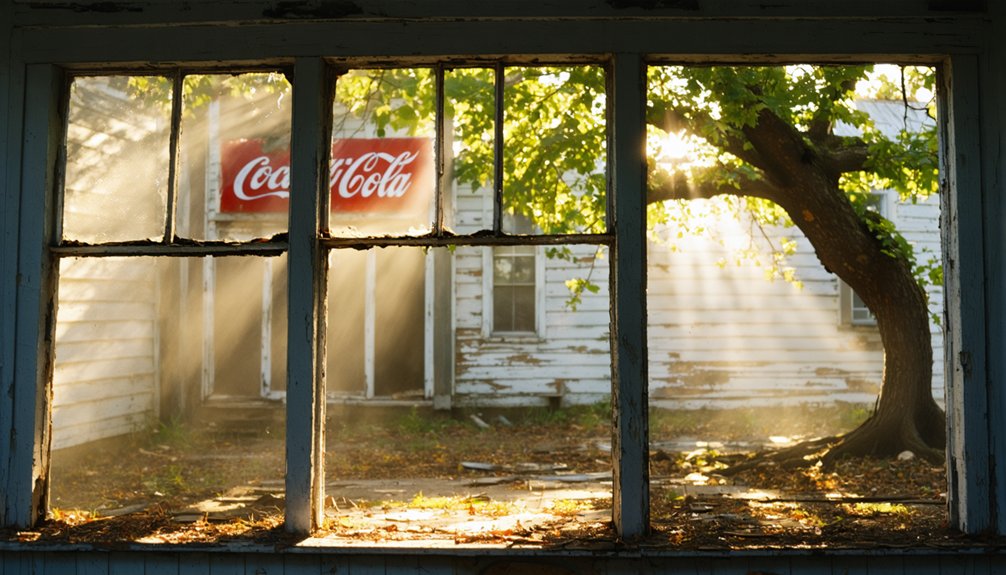On June 15, 1836, Arkansas joined the union as the 25th state. With a history going back over 185 years, plenty of events, memories, and ghost towns helped develop the territory into the state we know today.
There are around 97 known ghost towns in Arkansas. In 1803, the Louisiana Purchase granted the United States ownership of the land that includes present-day Arkansas. The economic downfall had an unfortunate hand in many towns being abandoned.
In 1835, Arkansas had over 52,000 residents and met the minimum qualifications needed for admission into statehood. The following year, 1836, the Democratic party pushed for statehood before the presidential election that Autumn in hopes of an advantage for a Democrat win. President Andrew Jackson signed the Arkansas statehood bill into law that summer.
Bear, Arkansas
While maintaining its townsite location near Lake Ouachita, Bear was first established in Montgomery County before being rezoned to Garland County during the 1900s. Also known as Bear City, the town was named after Bear Mountain and began with only a post office in 1882. Two years later, in 1884, the first plat for the city was filed. Only a few homesteaders lived in the area when rumors of gold started to spread.
By 1887, 35 mining companies were setting up in Bear. Two newspapers, Bear City Times and Arkansas Mining Journal, set up shop in the bustling town that had grown almost overnight from a few homesteads to nearly 5,000 people.
Disappointment hit hard as the stories of gold turned from hope to speculation to scams. After the Geological Survey of Arkansas exposed the gold scams for what they were, many residents moved away.
The families that chose to remain in Bear City continued to live off the land in a homesteading fashion. A school was built in 1906, and in 1930 a chair factory offered employment to a few individuals in the town. To this day, Bear continues to keep a small population.
Graysonia, Arkansas
The present-day ghost town of Graysonia was a thriving lumber town in its prime time. Now located on a dirt road locally known as “the middle of nowhere” with a few scattered structures throughout the vicinity of the townsite, at its peak, Graysonia was one of the main towns for lumber work and consistently kept over 1,000 full-time residents.
The lumber town of Graysonia was named after William Grayson, one of the shareholders in the Arkadelphia Lumber Company. In 1902, Grayson made a joint decision with Nelson McCleod, another shareholder, to move company lumber operations along the Antoine River in southwest Arkansas. When the town was founded, it started with a population of only 350 people.
As lumber demands increased through World War I, Graysonia became a leading hub for lumber operations and quickly grew in size and population. Arkadelphia Lumber Company employed more than 500 people and produced more than 150,000 feet of boards each day.
In 1907, a water reservoir, firehouse, kilns, and the main mill house were built. Between 1909 and the 1930s, the Memphis, Dallas, and Gulf railroad ran through Graysonia.
Around 1915, the town consisted of hundreds of houses, small cafes, a hillside restaurant, three hotels, and multiple mills. By the 1920s, there was a movie theater, a school, a church, and even running water and electricity.
The once-small town was well on its way to success. Unfortunately, being a company-owned town and the lumber company having a “cut and move” policy, once all the resources were used, the company moved on to its next location, leaving Graysonia to begin its downfall.
The company’s “cut and move” policy was not the only issue the town faced for any chance of survival. In 1929, the Great Depression was sweeping across the county. As much as the residents tried to hold on, Graysonia fell victim to other towns. As the lumber mills closed, some residents tried to find work at the Cinnabar mines, but mining operations were unsuccessful. Soon the city was abandoned.
The lumber and logging equipment used in the town was moved to Delight, Arkansas, in 1937. The post office remained operational until its final days in 1950. The last resident of Graysonia moved away in 1951. Today, all left of the ghost town are foundations from some structures.
Monte Ne, Arkansas
Monte Ne, created and developed by William Hope Harvey, was meant to operate as a health resort in the Ozark Mountains on the edge of Beaver Lake. Harvey was known as a financial theorist and even a United States presidential nominee at one time.
The idea behind Monte Ne was ambitious and had the potential for success if only tragedy and bad decisions did not play a role in the outcome of the former town.
The land where Monte Ne was to be developed had a history of its own before becoming a health resort. A grist mill, distillery, post office, and vineyard were successfully operated from the 1830s through the early 1900s. In 1900, J.G. Bailey sold 325 acres of land and a cabin to William Harvey.
Harvey moved into the small cabin on his newly purchased land while his family remained in Chicago. Tom, Harvey’s son, eventually joined him in Monte Ne, and the two began to prepare the house for the rest of the family to move to Arkansas.
The disaster struck only a few months after the family reconnected when the cabin burned on the fire. Everything the family owned was lost to the fire. Anna, Harvey’s wife, returned to Chicago after the fire, but Harvey remained on his newly purchased land to continue with his plan.
Monte Ne was chosen for combining Spanish and Omaha Indian words to form “mountain water.” Knowing European spas, Harvey saw the name as perfect for his resort. Paying to have Silver Springs Creek narrowed between Big Springs and Elixir Springs, William Harvey created Big Spring Lake and a creek known as “the lagoon.” Limestone retaining walls were erected along the banks of the creek and lake. Soon, the area became a popular location for picnics and boating.
Towards the end of 1900, the Monte Ne Investment Company was formed with $48,000 of Harvey’s personal money and $52,000 of investors’ money. The first hotel to be completed was named the Hotel Monte Ne, which was finished in April 1901. Hotel Monte Ne was three stories tall with two wings, each 300 feet long, and all the rooms had a doorway to the outside porches.
Travel to Monte Ne was not easy, as there were very few roads, and personal automobiles were not common yet. The Arkansas Railroad Commission granted railroad access in April 1902. Upon receiving permission for the railroad, the Monte Ne Railway Company was started in May of that same year.
Harvey oversaw the company, which had a capital stock of $250,000 and 240 of the 250 shares in his name. The route to Monte Ne was a private line five miles from Lowell transfer station to Monte Ne. Railway access started in June 1902.
In 1904, the Monte Ne Club House Hotel and Cottage Company were organized with a capital stock of $250,000. Five hotels were proposed; the Club House Hotel and four hotels in a row to be named after bordering states.
Stockholders were given certificates and special privileges to stay at any of the Monte Ne hotels. Missouri Row, one of the proposed hotels, was opened in 1905. Hotel rooms were rented out at $1 a day or $6 a week.
Oklahoma Row was the next proposed hotel to take shape in 1907. With nearly 300 new stockholders, the hotel needed to be brilliant and impressive. Oklahoma was one of the first multistory concrete construction structures in the country.
The project began to take a toll on Harvey’s finances. As the railroad went bankrupt, so did the community of Monte Ne. Harvey’s idea never came to full fruition. After his death in 1936, the property in Monte Ne was sold in lots.
By 1964, most of the town had been submerged after Beaver Lake was created. Few structures are visible when the lake is at its highest, but more of the former city can be seen when water levels are low. Missouri Row and Oklahoma Row were once the largest buildings in the world. Monte Ne was also the first to introduce indoor swimming pools to Arkansas.
Rush, Arkansas
Rush had a significant role in railroad and infrastructure development during its time. Located in the North Arkansas Lead and Zinc District, Rush Creek mines were a major part of the zinc industry in the 1880s to 1940s.
Starting in the 1800s, Rush was a thriving community of homesteaders near the Buffalo National River. The former town was established on 1,300 acres in a historic mining district. As zinc ore was discovered in the Rush Valley, the mining boom took over, and by the 1890s, several homes, families, and businesses were trying to stake their claim at fortune.
During World War I, Rush held a prominent role in railroad development. World War II dismantled and salvaged several processing mills as the community tried to hold on a bit longer.
The post office stopped all operations in the 1950s and the residents who remained finally deserted the town in the 1960s. At its peak time, ten mining companies operated 13 mines. The setting of Rush today is the same as it was during its glory days.
In its isolated part of the Ozark Mountains, Rush is seen as an abandoned town with buildings still erect, foundations, mines, and other ruins common to a mining town. In 1987, Rush was added to the National Register of Historic Places.



